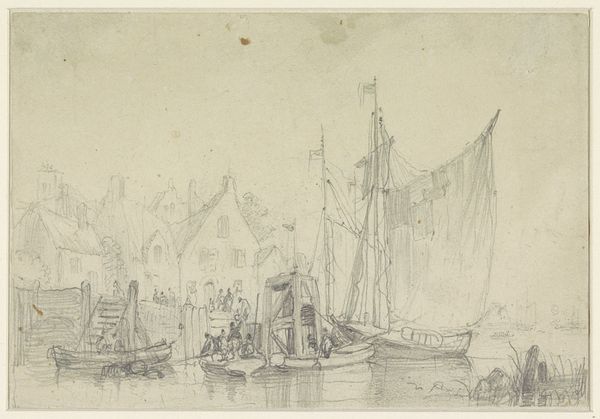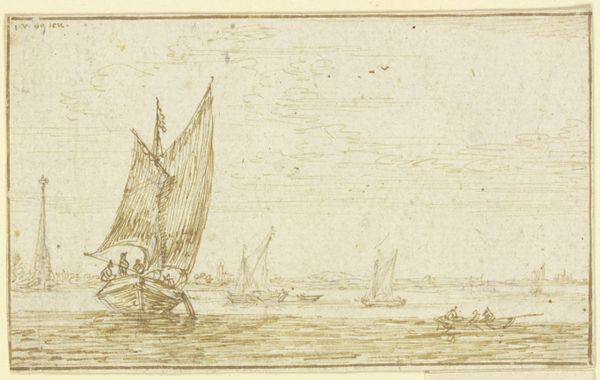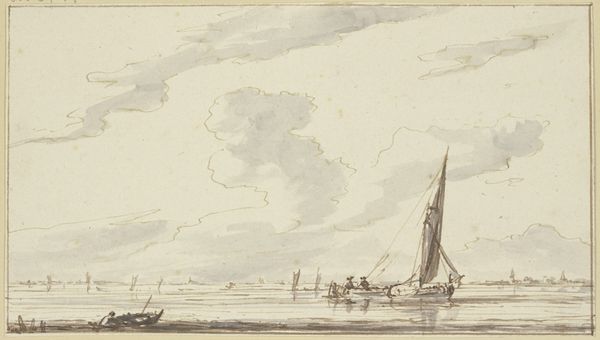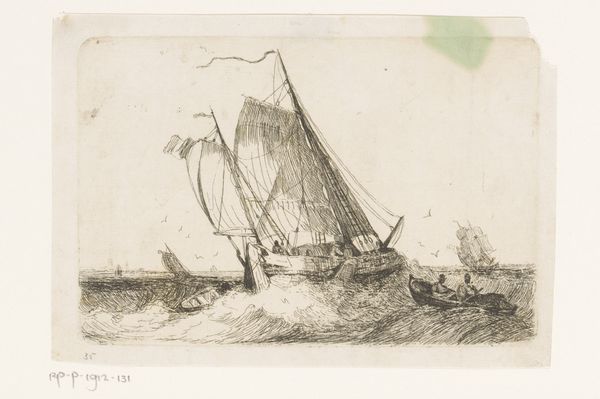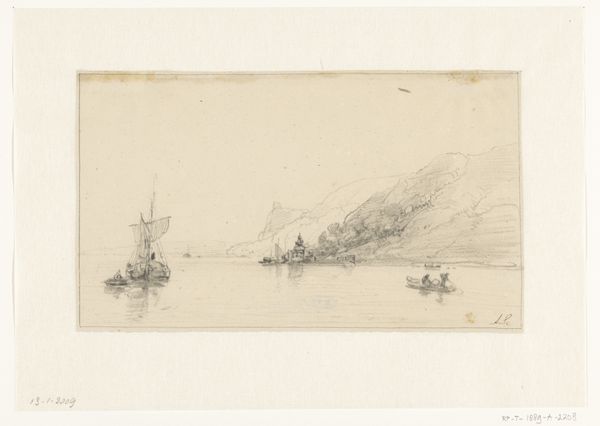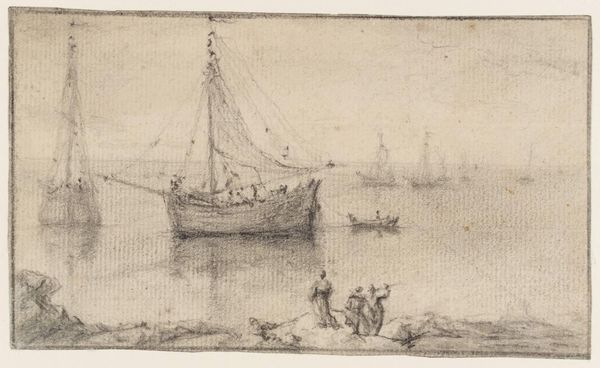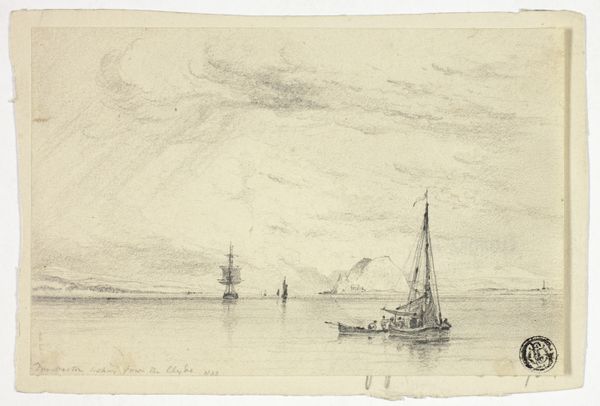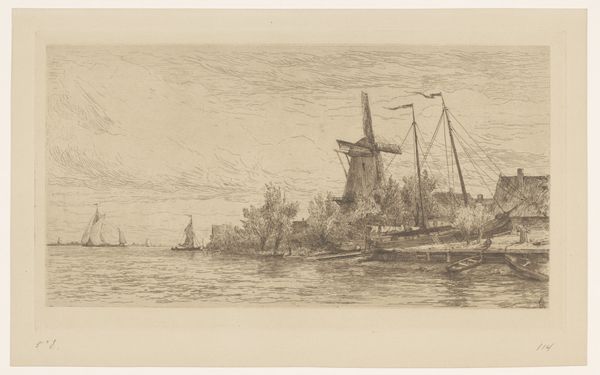
Riverscape with Two Sailboats and Several Figures; verso: A Mountainous Landscape near a River with a Horse-Drawn Barge and Several Figures 1596 - 1633
0:00
0:00
drawing, print, etching, pen
#
drawing
#
boat
#
baroque
#
dutch-golden-age
# print
#
etching
#
landscape
#
figuration
#
pen
Dimensions: Sheet: 5 7/8 × 10 9/16 in. (15 × 26.8 cm)
Copyright: Public Domain
Curator: Looking at this etching by Cornelis Claesz. van Wieringen, titled "Riverscape with Two Sailboats and Several Figures; verso: A Mountainous Landscape near a River with a Horse-Drawn Barge and Several Figures," created sometime between 1596 and 1633, what captures your eye? Editor: Immediately, the linear quality strikes me. The stark contrast created through etching gives the scene a delicate, almost dreamlike feeling despite the busy composition. There's a real emphasis on the form and line here. Curator: I agree. The labor involved in creating these kinds of prints during the Dutch Golden Age is crucial. These weren't just artistic expressions; they were commodities. This image likely served as a study or a template to be reproduced and circulated, potentially reaching a much broader audience than a unique painting ever could. Consider the infrastructure, workshops, and network necessary for its distribution. Editor: Certainly. But consider how van Wieringen has structured the composition itself. See how the masts of the sailboats reach up to meet the wispy, clouded sky? This verticality is juxtaposed by the horizontal line of the river, offering an undeniable visual structure, like a geometric equation, wouldn't you say? Curator: Interesting take. For me, the figures are also relevant. Their work by the riverside implies a whole system of labor intertwined with this landscape. The materials transported, the structures built, and the societal forces enabling their economic status are evident in the drawing's theme of commercial activity in the riverscape. The print isn't just a pretty picture, but a document of the socio-economic conditions of the time. Editor: I appreciate that contextual approach. However, observe closely how the figures are positioned in relation to each other. There's a carefully calibrated rhythm within the small grouping on the shore, mirrored in the repetition of boats along the river. The subtle adjustments in size, line weight, and orientation are visually quite refined and contribute to a satisfying sense of order. Curator: That formal harmony appeals to us across eras, doesn't it? The etching itself remains—even as our readings are shaped by very modern materialist or formalist theories. Editor: Indeed. Van Wieringen's artwork offers many levels to explore the world that the piece renders with the forms it comprises.
Comments
No comments
Be the first to comment and join the conversation on the ultimate creative platform.


